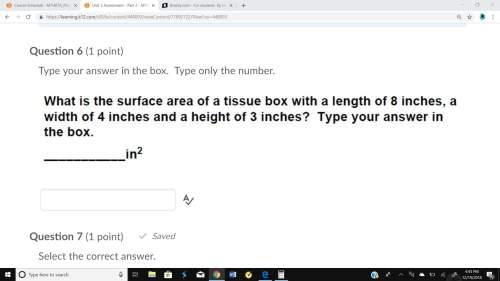
Mathematics, 17.01.2021 01:00 nawafcanada
Next, you'll test your hypothesis from part A by examining the reaction times of vinegar and baking soda
in water at four different temperatures. You'll carry out the reaction using water at room temperature
(about 25°C), 40°C, 60°C, and 80°C. Make sure that you use the same amounts of vinegar and baking
soda for all three three trials.
Gather all the materials, and perform these steps for each trial:
1. Heat at least 1 cup (60 milliliters) of water to the required temperature (refer to the data table).
Water may be heated on a stove, on a hot plate, or in a microwave oven.
2. Measure and record the actual temperature of the water.
3. Measure 1 tablespoon (15 milliliters) of the water into the cup.
4. Add teaspoon (1.5 grams) baking soda to the water, and stir until it is dissolved. The solution will
be clear.
5. Measure 1 tablespoon (15 milliliters) of vinegar, but do not pour it into the cup yet.
6. Very quickly, do all of the following:
a. Pour the measured vinegar into the cup.
b. Start the stopwatch.
C. Stir or carefully swirl the substances in the cup.
7. The chemical reaction will produce bubbles. You'll be able to see the bubbles and hear them pop.
Watch and listen for when the reaction stops. When it looks and sounds like it has finished, stop the
stopwatch.
8. Record the reaction time in the data table.
9. Discard the solution down the drain, and rinse the cup.
10. Repeat steps 1-9 of this procedure, doing three trials for each water temperature. Record the
average temperature and reaction time for each set of the three trials. Read this math review to
know how to calculate average of a data set.


Answers: 1


Another question on Mathematics

Mathematics, 21.06.2019 17:30
Miguel’s teacher asks him to color 4/8 of his grid. he must use 3 colors: red, blue, and green. there must be more green sections than red sections. how can miguel color all the sections of his grid to follow all the rules
Answers: 1

Mathematics, 21.06.2019 23:40
Statement reason 1. δabc is similar to δced. given 2. 3. definition of slope 4. slope of slope of definition of slope 5. slope of × slope of multiplying the slopes 6. slope of × slope of substitution property of equality 7. slope of × slope of simplifying the right side the table contains the proof of the relationship between the slopes of two perpendicular lines. what is the reason for statement 2? a. parallel line segments that meet a common perpendicular line are proportional in length. b. the lengths of vertical and horizontal sides in congruent triangles are in a common ratio. c. trigonometric identities determine the lengths of the legs in a right triangle. d. corresponding side lengths in similar triangles are proportional in length.
Answers: 2

Mathematics, 22.06.2019 00:30
Jaxon has s packs of 8 crazy straws. he divided the crazy straws into 2 equal bags. now, he has 224 crazy straws in each bag. how many packs of crazy straws did jaxon start with?
Answers: 1

You know the right answer?
Next, you'll test your hypothesis from part A by examining the reaction times of vinegar and baking...
Questions

Chemistry, 31.10.2020 02:00


Mathematics, 31.10.2020 02:00


Mathematics, 31.10.2020 02:00

Chemistry, 31.10.2020 02:00

Geography, 31.10.2020 02:00


Mathematics, 31.10.2020 02:00


Mathematics, 31.10.2020 02:00

Mathematics, 31.10.2020 02:00

History, 31.10.2020 02:00

Mathematics, 31.10.2020 02:00

Biology, 31.10.2020 02:00



Engineering, 31.10.2020 02:00

Biology, 31.10.2020 02:00




